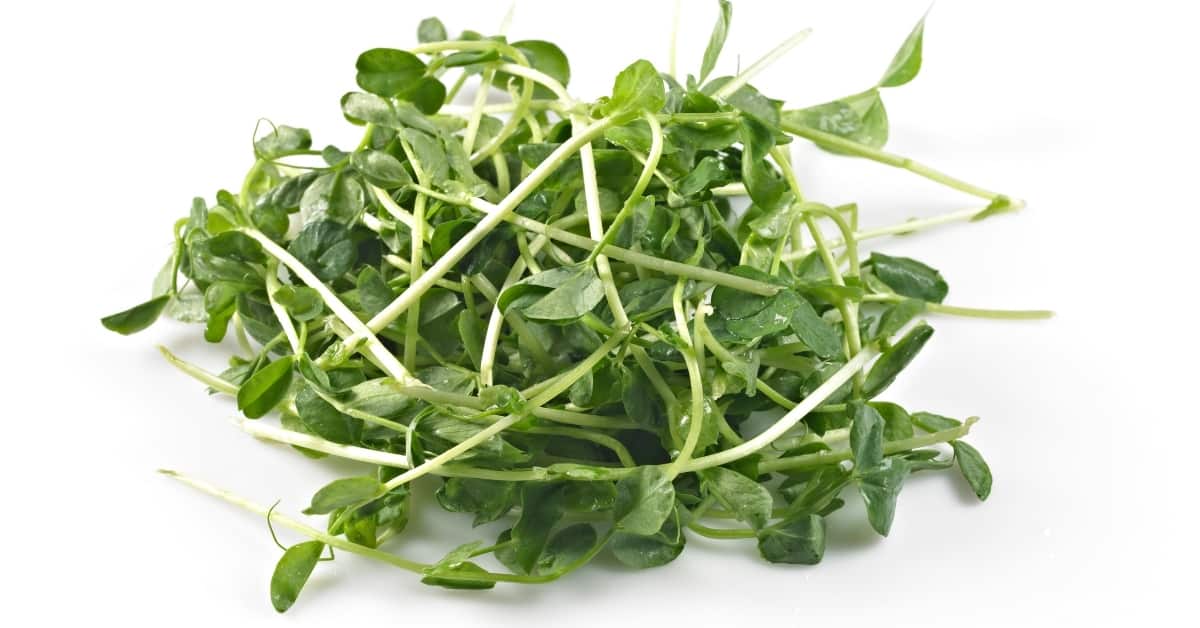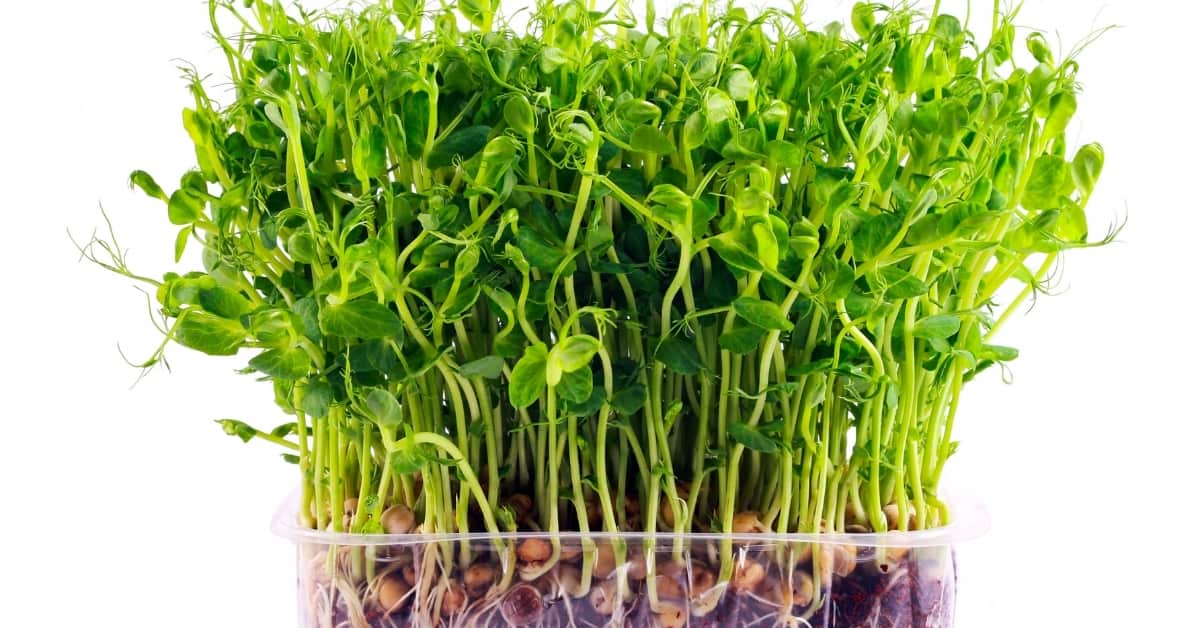Most reasons about why are microgreens falling over, resolve around watering and environment that can be easily corrected by simple steps.
These steps include watering your garden more, have a proper light source, and keeping it well-ventilated.
Microgreens are relatively easy to grow and harvest, making them a popular choice from beginners to veteran gardeners. Microgreens flourish under the right conditions and require very little space. If your microgreens are not looking healthy, there are remedies that can spruce your garden up in no time; it’s just a matter of diagnosing the problem.
Microgreens fall over because:
- Microgreens need more water.
- Water is not reaching the microgreen roots.
- Microgreens are overcrowded
- Do not have enough ventilation
All organisms require proper resources to remain healthy. For microgreens, water is at the top of the list. Mastery level skills of keeping your microgreens standing tall can be attained by following these simple micro tips.
Your Microgreens Need More Water
Not getting enough water is the number one reason why microgreens will fold. Watering needs differ per microgreen, so it is important to read the instructions supplied upon purchase. Most microgreens need a constant source of water.
Keeping the soil damp at all times is an ideal environment. Microgreen growing kits can take much of the guesswork out of creating a nurturing environment. Self-watering growing trays offer great assistance in over or under watering your microgreens.
Water Is Not Reaching the Microgreen Roots
The leading cause of wilting is using a hose to water the microgreen from the top. Remember, these are miniature veggies. Typically, successful microgreens have two pans. One contains the microgreen, and one stacked under the pan for watering.
Pouring the water in the second pan allows the water to reach the root system without waterboarding the poor little guys. You can also spray the microgreens using a spray bottle and cover the garden with a transparent cover.

Your Microgreens Need More Light
Let there be light plays a crucial role in thriving microgreens. There are several different kinds of light, but sunlight is the easiest and cheapest to use. Light needs will vary depending on the microgreen you are growing.
What Are Proper Light Sources for Microgreens?
Sunlight will always be the best source of light for microgreens. If your microgreens are in a place that lacks natural light, try relocating them. If you are in an area that does not have a lot of natural light or plagued by stormy skies, these are viable substitutes:
- Incandescent light
- Fluorescent light
- LED
How much light a microgreen requires depends on the type of microgreen crop you are growing. It is always a good idea to read the instructions included with your microgreen purchase for information on how much light a day your microgreen should get.
Microgreen Garden Is Overcrowded
Understandably, a fondness for microgreens makes you want to cram as many seedlings as possible into the planter box, but this can make them fall over. If there are too many microgreens in one container, they will fight for resources causing them to be malnourished.
Microgreens Require Ventilation
Make sure your microgreens have a breathable environment. Poking a few holes in the bottom of the planter usually does the trick. Make sure the soil is not packed in too tightly, strangling the microgreen. Ventilated humidity domes help make sure that your microgreen environment maintains the correct humidity and airflow.
Growing Tips
Setting up your microgreens for success from the very beginning is key to avoiding problems. Ensure you have all the supplies you need for the type of microgreen crop you want to yield. Some microgreens tend to hold up a bit better for novices. Robust seed kits are easily found that include everything you need.
These microgreens are more forgiving in a garden environment than their counterparts and are considered to be the best gardens to start with. Set up takes a few minutes with all the essentials. If you are not a fan of getting your hands gritty with soil, microgreens can also be grown hydroponically.
Hydroponic Kits
Microgreens can be grown with hydroponics. Growing microgreens without soil are thought to be the new ideal way, even for those just starting out. If you enjoy growing microgreens or are finding that soil is not agreeing with your gardening strategy, a hydroponic kit may be the way to go.
When to Harvest Microgreens
Microgreens are ready to harvest after the first leaves (about four or so) appear. This is usually 2-3 weeks after initially planting them. Harvesting is simply cutting at the base right above the soil with a scissor.

Microgreen Regrowth
Most microgreens do not grow after harvesting. If you miss clipping the bottom of the plant, they might redevelop; however, this effects taste and stunts growth. It is highly recommended to flip the soil and start anew.
Reusing the Soil
You can reuse the soil after harvesting your microgreens by merely turning it over. The soil turns into compost naturally. Reused soil is full of nutrients that are great for a new microgreen garden. To reuse the soil, remove the microgreens, fluff it up a bit with your hands and flip it over to replant.
Root Rotted Soil
If the soil you are about to reuse has signs of root rot or fungi, do not reuse it. You will want to discard this soil and start with a new batch.
How Do You Eat Microgreens?
Microgreens can be eaten in various ways thanks to their delicate size and robust flavor; they compliment many dishes. Several recipes and ways to utilize your daily microgreen intake can be introduced in salads, sandwiches, and casseroles. The possibilities are endless. Microgreens have gone from being found only as an exclusive restaurant garnish to a plate in near every home.
Can I Make Money Selling Microgreens?
The small space that microgreens require, coupled with the ease of maintenance and fast growth time, make microgreens a profitable endeavor. It is possible to earn a significant income specializing in this niche of the food pyramid. Some crops are better suited at this than others.
What Are the Most Popular Microgreens to Grow for Profit?
The most popular microgreens for profit are:
- Basil
- Celery
- Cilantro
- Leafy greens (rainbow chard)
If you are serious about starting a business with microgreens, this is the place to start. How profitable microgreens are dramatically depended on supply and demand. This is something you will want to keep updated.
Can You Grow Microgreens All Year Long?
Microgreens can be grown at any time during the year. This makes them ideal for both home enthusiasts and entrepreneurs. The harvest can be enjoyed year-round. The ability to be grown throughout the year is appealing for both home hobby and business models.
Why Grow Microgreens?
Microgreens have become more than a food presentation prop. They are full of flavor and color, making them both delightful to look at and has all the benefits of their full-grown cousins. Microgreens are compact, easy to care for, can be enjoyed during all seasons, and have a short incubation period making them in high demand. This high demand can be monetized by avid microgreen farmers and require a modest budget to get started.
Planning your microgreen garden with the correct tools from the beginning can keep your microgreens flourishing. Keeping microgreens healthy and preventing them from falling over can be a minor challenge with big, tasty rewards.

